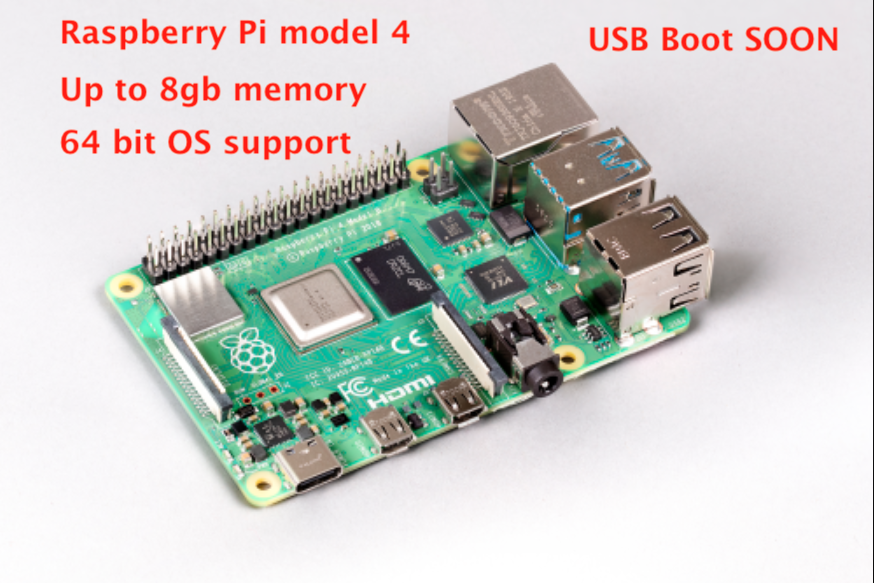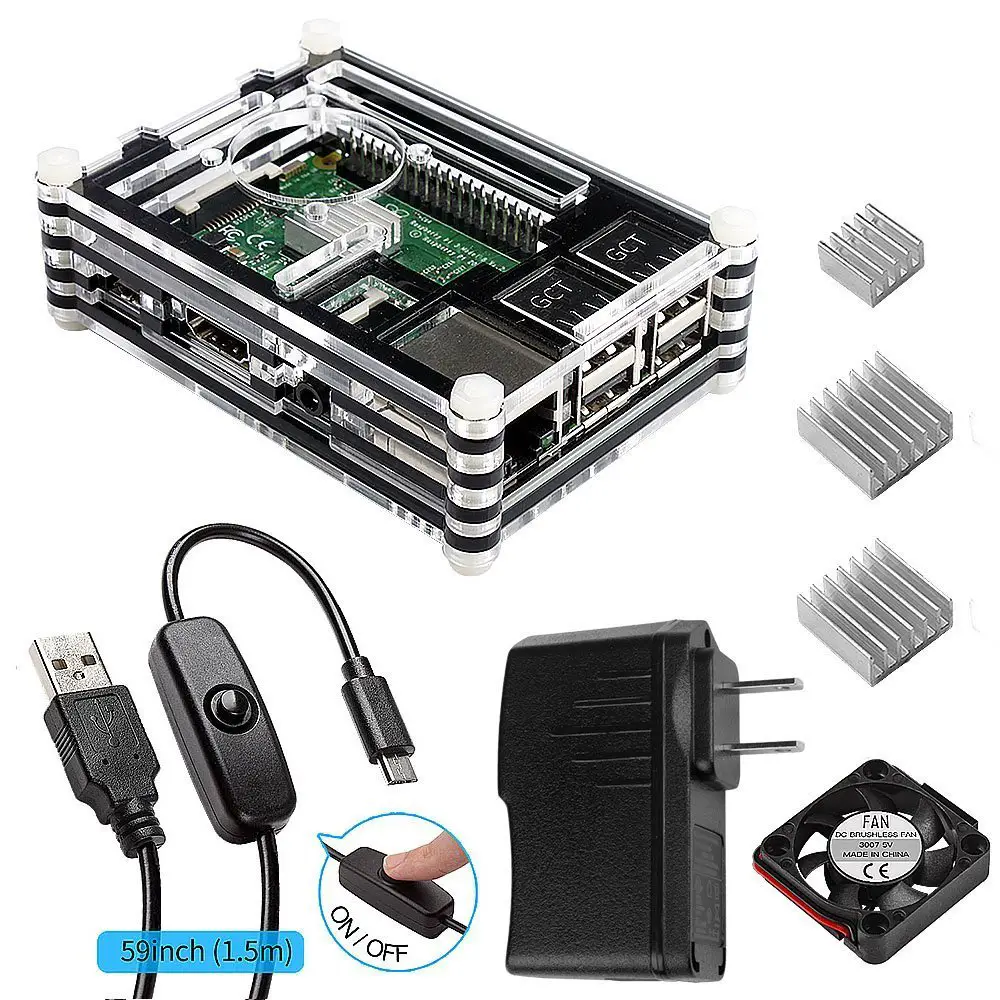; Date: Thu May 28 2020
Tags: Raspberry Pi »»»»
A cluster of Raspberry Pi announcements has us thinking "Desktop Computer from Raspberry Pi?" Last week videos started circulating showing how to boot a Raspberry Pi from USB, then today the Raspberry Pi Foundation unveiled an 8GB model, and support for a 64 bit version of Raspberry Pi OS (formerly known as Raspbian). Taken together this vastly increases the possibilities for how this diminutive humble little computer can be used.

The
announcement today seems very low key. Ho-hum, the Raspberry Pi team has some updates. It's exciting to see 8GB of memory on the Raspberry Pi, but one can read that and go "big whoop". The points announced are:
- 8GB version of Raspberry Pi 4 now available, priced at $75
- OpenGL ES 3.1 conformance
- Has started work on a Vulkan driver for better graphics performance
- Shipped PXE Boot for booting across a network
- Unveiled a prototype USB boot mode
- The official OS is now named Raspberry Pi OS
- The official OS now available in a 64 bit build, to allow processes with over 3GB of memory
Building a proper desktop computer from a Raspberry Pi is more than just a faster CPU and more memory. The Pi 4 brought the idea closer to fruition because it has a faster CPU, better USB and Ethernet, and more memory than the Pi 3. But there's another thing, which is getting the user off of a flimsy SD card as the primary system partition.
The desktop Raspberry Pi dream is now possible because of the USB boot and PXE boot modes. Having more memory, better graphics, better USB and better ethernet adds a lot to the attraction, but the key is booting off something other than SD cards.
An SD card is slow and unreliable compared to a real hard disk (either SSD or HDD). Therefore it's the height of folly to use an SD card as the main boot partition of a desktop OS. For the intended use of Raspberry Pi's, namely to be a high power compute engine in a hardware project, the SD card is a reasonable choice. But for a daily driver desktop computer, no.
Increasing the maximum memory is a big boost because it lets us run larger applications. Moving to the 64 bit OS build was required because of 8GB of memory. As the announcement explains, a 32 bit OS is limited to 3 GB per process, and on an 8GB board don't you want processes that can address more memory? Therefore a 64 bit OS was required, and thankfully they could base Raspberry Pi OS on the Debian 64 bit ARM build.
Interestingly the CPU used in the Raspberry Pi 4 can handle 16 GB of memory. They were able to move to 8 GB of memory thanks to a new memory package from Micron. But it indicates a possible future where a Raspberry Pi 4 or Pi 5 or whatever can use even more memory, like 16 GB or 32 GB or whatever else that Micron can squeeze into a small package.
Oh.. and a product team that's willing to make a larger board could easily build one with multiple memory chips supporting 16 GB of memory. The board would have to be larger than the Pi 4, and consume more energy, but it's certainly possible.
What's the attraction to a Desktop Raspberry Pi 4 versus a compact computer like Intel NUC or Lenovo M93?
If you're willing to use an Intel or AMD x86 system it is possible to build an inexpensive, low power consumption, desktop computer, today. Two examples are the Intel NUC and Lenovo M93, but I think there are other ultra small form factor PC's of the same ilk. These are small boxes containing a full power CPU - usually built using parts meant for laptop computers - along with USB 3 and gigabit ethernet. It is easy to find 16GB of memory supported, and they support a wide range of operating systems. Finally, the power consumption and cost is very low.
Today we can easily build a powerful Linux based small form factor PC, at low cost, low power consumption, with memory and performance capabilities way beyond the Raspberry Pi 4.
In the comments to the Raspberry Pi announcement, I saw someone going woohoo because they can base their Postgres install on the newly announced machine. But they could have easily gotten an Intel NUC or Lenovo M93 for that purpose anytime over the last years.
The primary purpose for Raspberry Pi is the maker community, meaning people building hardware projects. In my case I started looking at these devices to build an energy management system for renewable energy systems. The GPIO pins allow connecting to hardware devices, and the ultra low power consumption means it being more practical to power the device off batteries.
For my desktop Linux needs - I am very happy with the Intel NUC sitting on the desk. I built that system 3+ years ago, and it has 2 TB of disk and 16 GB of memory and runs multiple background processes for me. Those capabilities were undreamed of in the Raspberry Pi world at the time, and is only now starting to be possible.
But maybe I could build 3 Raspberry Pi 4 instances for the cost required to build that Intel NUC? Maybe that's the attraction, a lower cost of entry.











